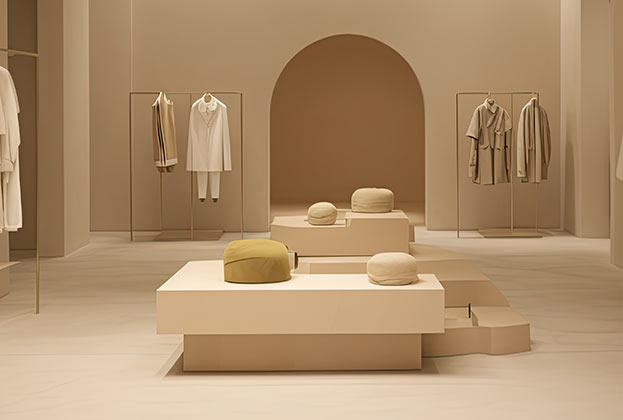Can you imagine the world we live in without stores and shopping malls? Will retail shops succumb to the growing threat of e-commerce?
It is now accepted that there are three types of retail channels of distribution. The first one—referred to as “pure players”—have an online shop without prior establishment of a physical store. CD Universe is one such example of an online shop for CDs, DVDs and video games that does not have a physical location. The second type—brick-and-mortar companies—are already operating business establishments that have complemented their retail locations with online shopping after recognizing the tremendous potential of e-commerce in boosting revenue, advertising, and accessibility to a wider market. Examples are Zara, Mango, Springfield, etc.
However, things might just be returning to the way they were. The last type of retail distribution, called click-to-brick, is relatively new. These exclusive online shops try to bolster their e-commerce business by setting up physical stores on high streets. For instance, Hawkers, a Spanish brand that sells sunglasses by internet, has decided to open its pioneer store at 17 Calle Carretas. Foot District, which markets multi-brand footwear, has inaugurated a shop at 35 Valverde. And Dr. Bloom, a promising fashion brand, has launched its maiden store in Madrid at 40 Claudio Coello Street. The latest addition to the bandwagon is the Danish brand Lego which has recently cut its inaugural ribbon at the La Vaguada Shopping Center. In the United States, the corporate online giant Amazon has also ventured into opening physical stores in Seattle and Chicago.
In some cases, the so-called “pure player” retailers rent commercial space as temporary pop-up stores to introduce their brands and expand their presence in the market for a specific time. If the store garners huge interest from the public, the retail company may decide to permanently set up shop. A case in point is the Chinese brand, AliExpress, which has opened its first pop up store in Malasaña. Thus, in light of the astonishingly rapid growth of e-commerce exerting more pressure on traditional brick-and-mortar shops to be more creative and aggressive in attracting consumers, one cannot help but ask what has urged these pure players to venture into high street shops. The reasons are quite simple. The greatest appeal of retail shops lies in the so-called “in-store customer experience” that is sorely lacking in the e-commerce model.
The greatest appeal of retail shops lies in the so-called “in-store customer experience” that is sorely lacking in the e-commerce model
For instance, the search for an authentic Birkin bag from Hermes involves a visit to their boutique and, perhaps, acquiring the expertise of an in-house fashion consultant. In the same manner, buying a pair of two-carat stud diamond earrings requires a highly meticulous selection process which cannot be duplicated by online shopping. On the other hand, shoppers have become more sophisticated when it comes to scrutinizing items before purchasing them online—a practice now known as “showrooming”—and made possible when they go to their favorite shop. Pick-up and return services are also provided in these stores. And let´s face it: a physical store remains the best way to showcase pure players’ products. After all, people love to go out shopping, especially in Spain where it is a key social activity.
Brands who implement the “click-to-brick” business model are poised to benefit from a win-win situation
Needless to say, brands who implement the “click-to-brick” business model are poised to benefit from a win-win situation: brick-and-mortar shops provide customers with the personal touch of the “in-store” experience, and an online store provides patrons all the conveniences afforded by the digital-mobile connection, such as the ability to preview and pre-order items, to name a few. The digital plus in-store platform proves a formidable formula when it comes to cementing customer loyalty.
A closer scrutiny of the aforementioned brands enables one to deduce the type of location needed by pure players. They are situated in the city center, not in the most prime retail high street but close to it, making rents more accessible. Store size varies depending on the merchandise that the brand wants to display. In the case of Lego, they opted for an upscale shopping center but this brand is well established worldwide and can manage to be in this type of location.
Will there be more click-to-brick firms that will follow the footsteps of their predecessors? The answer is anyone’s guess. While pure players embarking on retail high street is still a novelty for now, at least as far as the Spanish market is concerned, the verdict is not yet out as to whether this trend will flourish. Nevertheless, the emergence of these stores in the retail scene seems to be gaining popularity. While concrete figures showing the impact of this model on sales are still scarce, and it´s too early at this stage to foresee the future of this market trend, one cannot deny that is a potentially promising venture to look for in the future.
Ultimately, as it has been in the past for many, shopping remains an integral part of our social repertoire. The human connection—the most important ingredient in any shopping experience—which was previously inaccessible in a purely digital shopping platform, is now made possible with the combination of both physical stores and their online extensions. Brands that maintain this human connection as the focus of their marketing efforts will be the ones to thrive on.
.jpg)




.jpg)




.jpg)